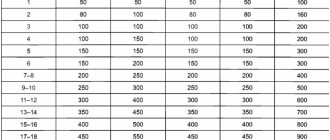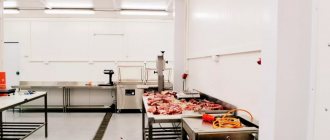Last modified: January 2021
Injury in the workplace requires a detailed analysis of the event in order to determine the culprit of the incident. Assigning the status of “industrial” or “domestic” to an injury, establishing the degree of severity determines the different level of responsibility of the employer and the various social insurance funds that finance disability. Classification of industrial accidents is a procedure that requires a special investigation.
Types of accidents
There is a common misconception about the unambiguous classification of an injury as industrial if it occurred on the territory of the actual place of performance of duties during working hours, and as domestic if it occurred on neutral territory or during non-working hours according to the schedule.
According to Article 227 of the Labor Code of the Russian Federation, the following types of accidents are subject to investigation:
- during working hours and the period necessary to prepare the immediate place of work for the production process, on the actual territory of the employer;
- during a lunch or technical break;
- on the way to work or home in a vehicle owned by the organization, as well as in a personal car used as a means of transportation with the permission of management;
- when moving around another locality during a business trip;
- when actually staying on the territory of another company or on the route due to the performance of official duties (couriers, forwarders).
According to the criterion for assessing the harm caused, accidents are divided into:
- mild injuries;
- severe injuries leading to long-term disability;
- injury to the body incompatible with life, causing death.
By the nature of the impact:
- extreme temperature conditions;
- poisoning with toxic chemicals;
- electric shock;
- mechanical stress, accompanied by the appearance of abrasions, bruises, dislocations and bone fractures.
Download the Work Accident Report (47.0 KiB, 257 hits)
Events that have occurred are subject to investigation, recording and recording in accordance with the established procedure. A preliminary analysis and classification is carried out in order to determine the composition of the commission, which differs from the type of incident.
Accident severity levels
It is impossible to determine the severity of the accident without conducting a certain investigation.
During it, an analysis of the circumstances of the incident is carried out, but the main aspect is the analysis of the factors that provoked the accident. Classification of the causes of an incident at an enterprise is a necessary basis for determining further investigation. There are several nuances to the organizational plan that triggered the incident that caused injury in the workplace, including:
- improper organization of work;
- uncontrollability of the labor process;
- disorder in the workplace;
- poor quality worker training;
- failure to provide safety training in a timely manner;
- lack of special clothing and protective equipment;
- untimely repair of equipment;
- violation of labor discipline.
Read more: Who should undergo periodic medical examination
Each of the above reasons can become a catalyst that provokes an accident.
Qualification of injuries received
The qualification of industrial accidents for the purpose of determining severity is carried out on the basis of current standards regulated by Order of the Ministry of Health and Social Development No. 160 of February 24, 2005.
The evaluation criteria are:
- the immediate nature of the injuries received at the time of the incident;
- complications that appear over time as a result;
- progressive development of existing chronic diseases as a result of the event.
The main difficulty in qualification is the impossibility of correctly classifying an event in terms of severity, since it is impossible to predict the development of complications and relapses of chronic processes in the body.
An appendix to the above-mentioned order has developed a special scheme for determining the severity of injury, which includes 3 groups of types of serious injuries:
- Trauma accompanied by painful shock, severe blood loss, blockage of blood vessels, coma, acute renal or pulmonary failure, dysfunction of the central nervous and cardiovascular systems.
- Injuries, burns and frostbite, radiation injuries, internal ruptures and damage, spontaneous abortion.
- Injuries that do not threaten death, resulting in loss of vision, hearing, and leading to persistent mental disorder.
Injuries that are not included in the preliminary diagnostic scheme are injuries of mild severity that the company can investigate on its own without involving third-party authorities. However, if complications are identified and guilt is proven, the perpetrators may be prosecuted.
Occupational injuries and their classification according to the severity of their occurrence can be reliably established over time, since there is a possibility of complications and relapses.
Main reasons
The leading causes and rates of injury in 2021 health data remain essentially the same as the previous several years. Most often, workers are injured due to the following factors:
- falling from height;
- impact of mechanisms and objects;
- an object falling on a person;
- traffic accident.
According to the European statistical agency Eurostat, occupational injuries in small enterprises are twice as high as in large ones. The reason for the unfavorable situation is a simple lack of funds.
Classifier of causes and circumstances
Order No. 21 of February 21, 20015 established the obligation to provide statistical data to the relevant authorities. The appendix to the document defines the types of injuries and the classification of injuries with the corresponding two-digit codes. In the provided report, the events that occurred are classified:
- For the reasons of the incident. They are divided into 15 reasons, including violation of the technological process, emergency condition of production premises, non-compliance with labor safety standards, violation of labor discipline.
- According to the circumstances of what happened. The list includes 18 groups, including falls from a height, building collapse, road accidents, and exposure to high temperatures.
The existing classifier allows us to determine the cause-and-effect relationship of the incident, assess the degree of guilt of the injured employee, non-compliance with labor protection and safety standards, negligent attitude towards equipment on the part of management and the impact of circumstances beyond our control.
Types of incidents
As for the types of incidents, they are also defined by the Federal Service for Labor and Employment. When filling out reporting documentation, it is advisable to first indicate the main type of incident, and write in brackets an addition to it. For example, the main one will be a transport incident, that is, 01 (in accordance with Table 2), and as additional information you will need to indicate code 014 - while walking to the place of work.
| Reason for NS | Code designation |
| Unreliability of operating equipment and machines | 01 |
| Imperfect technological process | 02 |
| Use of faulty mechanisms | 03 |
| Poor condition of buildings and surrounding areas | 04 |
| Violation of the technical process | 05 |
| Violation of safety rules | 06 |
| Violation of traffic rules on a car | 07 |
| Poor organization of working conditions | 08 |
| Improper organization of workspace | 09 |
| Poor quality training of employees in terms of labor protection. We are talking about failure to carry out safety instructions, lack of training | 10 |
| Lack or non-use of IZ funds | 11 |
| Non-use or absence of collective protective equipment | 12 |
| Violation of work rules, discipline and routine. This item includes the victim’s alcohol intoxication, etc. | 13 |
| Employment of an employee outside of their specialty | 14 |
| Other possible causes are determined by the investigation commission | 15 |
| Incident | Code |
| Transport accident. This includes injuries sustained by an employee on any transport (road, rail, air) during work, traveling to the workplace, on business trips or during business trips in his own car. | 01-014 |
Falls. This species is divided into several subspecies:
| 02-022 |
| Landslides, falling objects from a height onto the victim. This category includes injuries resulting from rock falls, earth masses, and building collapses. | 03-034 |
| Impact of objects and machines in motion: bruises and injuries resulting from collisions with objects and machines in motion, pinching by objects - moving or not | 04-045 |
| Penetration of a foreign body into the victim’s body through natural openings or skin: inhalation of gases, swallowing objects, which led to blockage of the respiratory tract | 05-053 |
| Overvoltage: excessive loads when carrying heavy objects or dismantling them, etc. | 06-063 |
| Electrical injuries associated with current exposure, lightning damage | 07-071 |
| Exposure to radiation | 08 |
| Exposure to excessively high or low temperatures: contact with hot equipment or other objects | 09-095 |
| Exposure to flame, smoke in any form: during a fire or as a result of contact with fire in a stove | 10-104 |
| Exposure to the body of harmful substances through the respiratory tract, skin, etc. This also includes the effects of alcohol | 11-112 |
| Neuropsychological overload that led to deterioration of health | 12 |
| Damage to plants or animals | 13 |
| Drowning or water damage | 14 |
| Damage to health caused by the actions of others | 15 |
| Damage caused by harm to one's own health (including suicide) | 16 |
| Injuries due to natural phenomena and emergency situations | 17 |
| Other damage determined by the commission | 18 |
Read more: How to determine the procedure for using shares in an apartment
A complete list of types of incidents in table format is available for download at this link. These types of incidents apply to all working groups of the enterprise, including workers, technical personnel, humanities specialists, service workers, military (Ministry of Internal Affairs, cadets, private security guards), managers (directors, their deputies) and so on.
Emergency actions by the employer
If an injury occurs on the actual territory of the enterprise, regardless of the type and severity, an investigation must be carried out.
Management actions are as follows:
- Providing emergency medical care with simultaneous confirmation by medical personnel of the fact of injury.
- When establishing a fact, the presence of a manager or an authorized representative is required. It is important to leave the scene of the incident untouched for the convenience of the appointed commission.
- Drawing up, according to the established template, an act on the event with the signature of the head or deputy and collecting witness testimony.
- Creation of a special commission of investigation. If the severity of an industrial injury is recorded as mild, then it is enough to include three people from the enterprise’s employees on the commission. If the damage is considered severe, several persons were injured, or the victim died, then the composition additionally includes:
- an authorized representative of the state inspection regulating labor safety issues;
- representative of the social insurance fund against industrial accidents;
- administration official;
- member of an independent organization of trade unions at the territorial level.
If the injured person is not an employee of the company where he was injured, then the information is provided to his immediate employer. In any case, the investigation is carried out by the organization whose territory became the scene of action.
Main causes of accidents at work
Note! The occurrence of a specific NS in production depends on many predisposing factors: the nature of the workplace and employment, the personality of the employee himself and a whole range of other working conditions.
As such, there is no generally accepted classification of the causes of industrial injuries.
Accidents
However, the following 3 types of damaging factors should be considered the main causes of stress at work:
- technical;
- organizational;
- personal.
Reference! The classification of injuries due to NS is given in Order of the Ministry of Health and Social Development of the Russian Federation No. 160. There are two types of injuries – mild and severe.
Notifying third parties
Concealing an injury that occurred on the production site is fraught with criminal liability for the head of the enterprise, therefore the incident must be reported within the following time limits:
- Throughout the day in the Social Insurance Fund against industrial accidents, regardless of the severity of the injuries received and the number of injured persons.
- In the event of a group incident, serious injury or death, the following are notified within 24 hours:
- labor inspectorate;
- prosecutor's office and local administration;
- local trade unions;
- relatives;
- employer of the organization, if the victim was not one of the employees of the enterprise that recorded the incident.
- If the real level of severity of the event was not recorded in a timely manner or the condition has sharply worsened, then the management of the enterprise on whose territory the incident occurred is given three days to notify all authorities.
Classification of types of accidents
The procedure for classifying accidents in the Russian Federation is established by order of the Ministry of Health and Social Development of the Russian Federation dated February 24, 2005 N 160. According to this regulatory document, the main criterion used by Rostrud statistics on industrial accidents is the severity of the injuries received by the employee:
- lungs, allowing you to fully restore the original degree of working capacity over time;
- severe, as a result of which the ability to work cannot be fully restored, so the employee is assigned a disability;
- fatal, ending in death for the victim.







